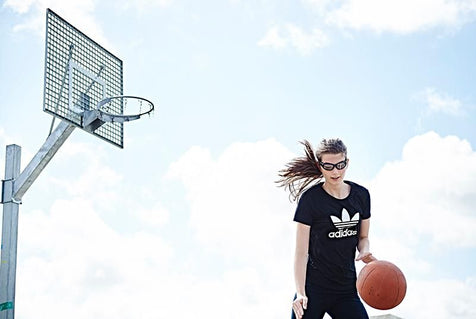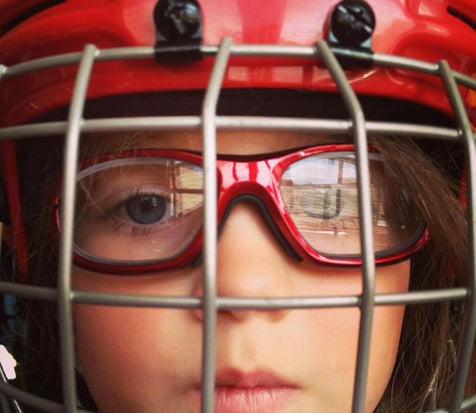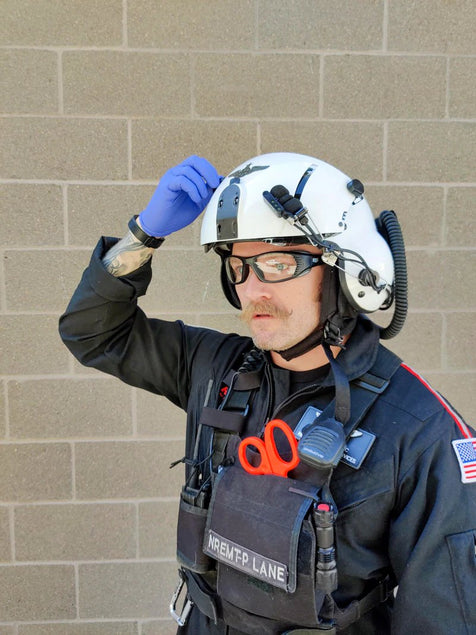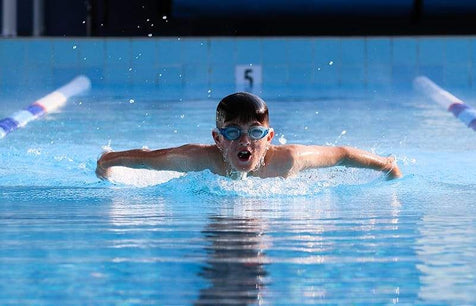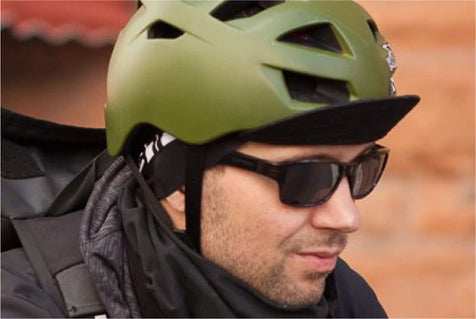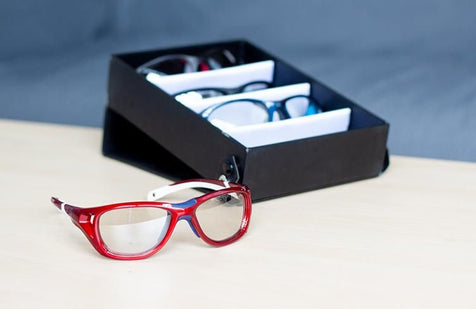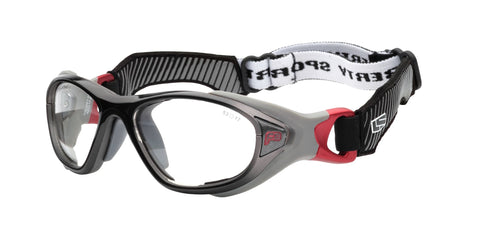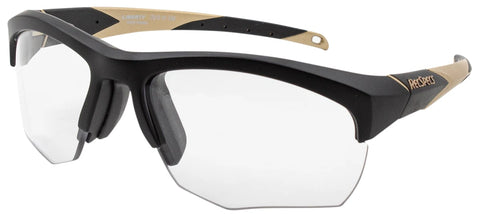Clear Vision, Winning Edge: The Importance of Eye Protection in Sports
April is Sports Eye Safety Month, and there's no better time to raise awareness about the importance of protecting our vision during physical activities. As athletes and fitness enthusiasts push their limits in pursuit of victory and personal achievements, eye safety can often take a back seat.
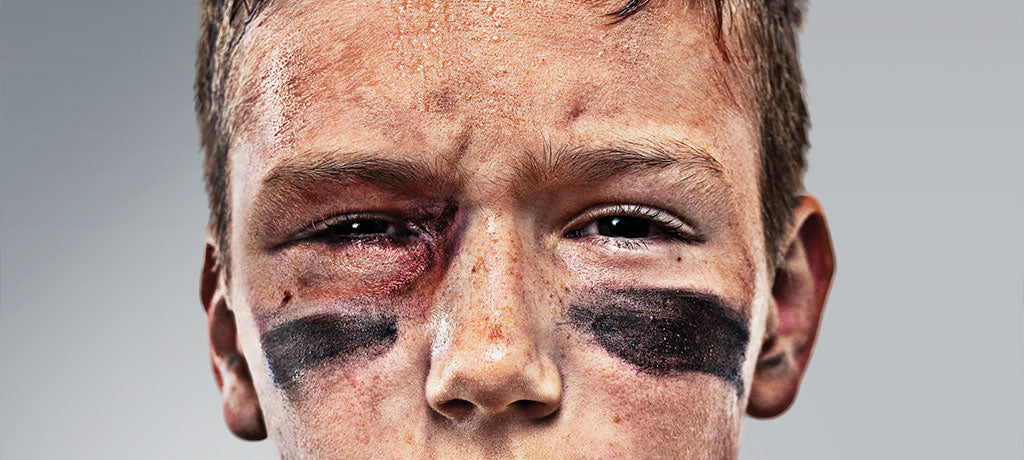
According to the American Academy of Ophthalmology (AAO), nearly 30,000 sports-related eye injuries are treated in U.S. emergency rooms each year. The good news is that 90% of these injuries could be prevented by wearing appropriate protective eyewear.
What sports cause the most eye injuries?
Although eye injuries can occur in almost any sport, certain activities pose a higher risk due to the nature of the game, the equipment used, or the intensity of the competition. Here are some of the sports with a higher likelihood of causing eye injuries:
Basketball: The close proximity of players, high-speed passes, and flying elbows make basketball a common culprit for eye injuries such as corneal abrasions, orbital fractures, and retinal detachments.
Baseball and Softball: The fast-moving balls and flying bats in baseball and softball can lead to serious eye injuries, including blunt force trauma, fractures, and hyphema (bleeding inside the eye).
Hockey: With pucks flying at high speeds and players colliding on the ice, hockey is a sport where eye injuries such as orbital fractures, retinal detachments, and corneal lacerations are not uncommon.
Racquet Sports (Tennis, Squash, and Badminton): The small, fast-moving balls in racquet sports can cause significant eye injuries, including hyphema, retinal detachments, and even ruptured eyeballs.
Soccer: While soccer may be low-contact at times, players still face the risk of eye injuries due to high-speed ball impacts, collisions, and accidental hits from opponents' limbs during the game.
Sports Eye Injury Prevention
To help prevent sports-related eye injuries, it's essential to follow these safety guidelines and best practices:
Use helmets with built-in face protection: In sports like hockey, baseball, and lacrosse, wearing a helmet with a face cage or shield can provide additional protection for your eyes and face.
Follow the rules and practice good sportsmanship: Abide by the rules of your sport and avoid engaging in overly aggressive or dangerous play. Good sportsmanship can help reduce the risk of injuries for all participants.
Keep the playing area well-maintained: Ensure that the playing surface is free of debris or hazards that could lead to falls or collisions, and that the boundaries are clearly marked to prevent players from running into obstacles.
Choose sports equipment with safety features: Opt for sports gear that is designed with safety in mind, such as balls made from softer materials or racquets with protective guards.
Wear appropriate protective eyewear: Choose sport-specific protective eyewear, such as safety goggles, glasses, shields, or eye guards, that are designed to provide maximum protection for the particular sport you're participating in. Ensure that the eyewear meets the required safety standards and fits comfortably and securely.
Protect Your Vision with Rec Specs

Sport-specific design: Rec Specs offers a wide range of protective eyewear tailored to the unique demands of various sports, ensuring optimal performance and protection for each activity.
Durability and impact resistance: Rec Specs eyewear is crafted using high-quality materials that can withstand the rigors of sports, providing superior impact resistance and protection against potential hazards.
Comfortable fit: Rec Specs eyewear is designed with adjustable features and ergonomic designs to ensure a secure and comfortable fit during high-intensity activities.
Certified safety standards: Rec Specs protective eyewear meets or exceeds the required safety standards, such as ASTM F803 and ANSI Z87.1, providing peace of mind and confidence in the level of protection they offer.

Enhanced vision: Many Rec Specs models come with advanced lens technologies, such as 2x2 ProCoat (anti-glare and anti-fog coatings), UV protection, and polarized or photochromic lenses, which help to improve visual clarity and reduce glare during outdoor sports.

Prescription compatibility: Rec Specs provides a wide range of prescription lens options for athletes who need corrective eyewear, catering to various prescriptions and ensuring optimal performance on the field. This enables athletes to enjoy the benefits of protective sports eyewear without compromising their vision or competitive edge.
Parents and children alike should prioritize vision safety by selecting the perfect pair of glasses designed for their specific sport. By raising awareness and taking the necessary precautions, we can all contribute to a culture of eye safety in the world of sports.
Should you require help in selecting the right pair of Rec Specs for you or your child's sports, our team of experienced outfitters is at your service, ready to provide expert guidance and support. Click here to start shopping or chat to our agents from the ‘chat’ icon.
You can also use our easy at-home try-on process to test out sports glasses from the comfort of your home. Click here to get started building your kit for FREE. Don’t forget – we also offer a 30-day satisfaction guarantee on your purchase!
So gear up, stay safe, and enjoy the thrill of the game this Sports Eye Safety Month and beyond!
